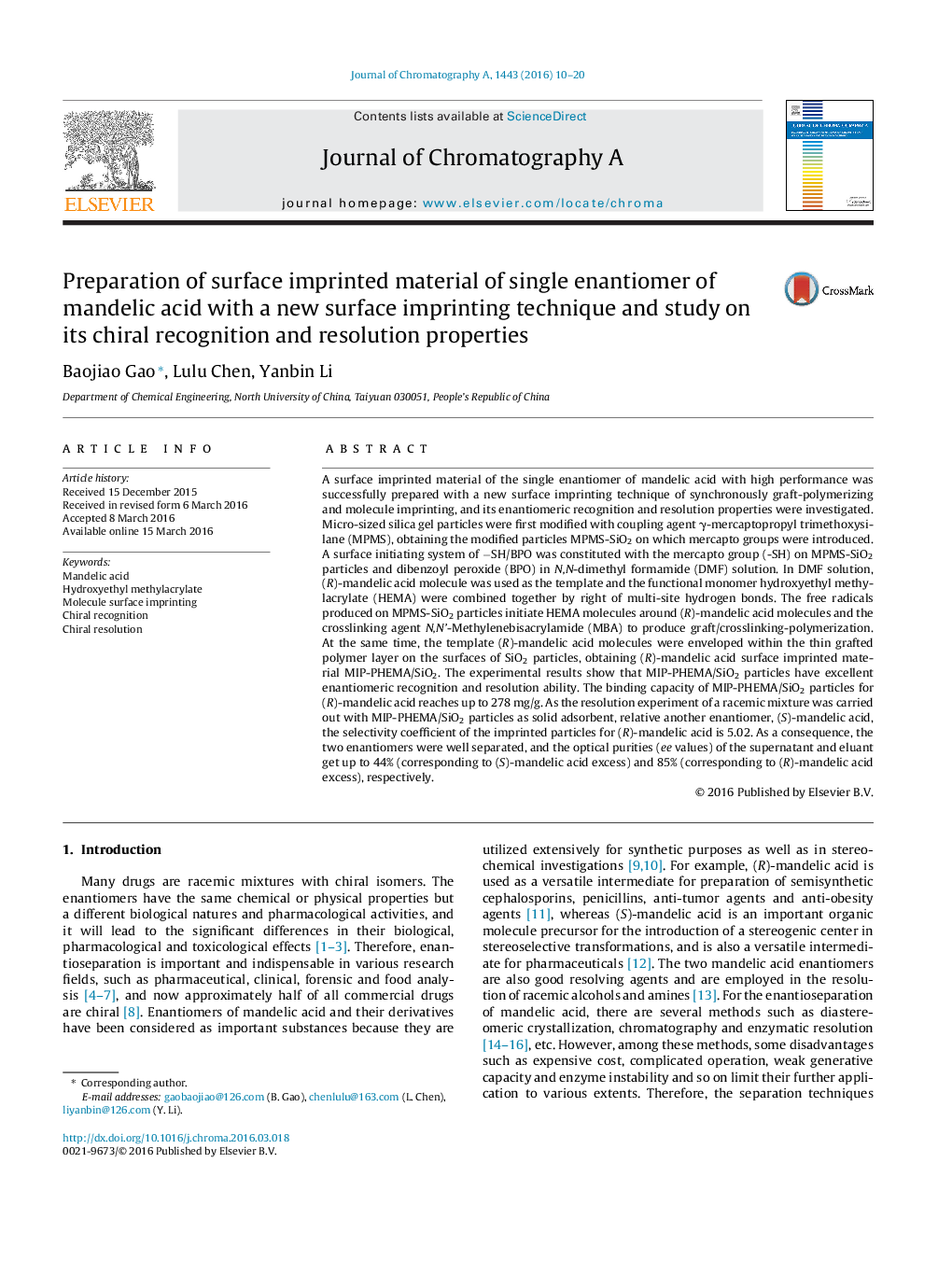| Article ID | Journal | Published Year | Pages | File Type |
|---|---|---|---|---|
| 1200480 | Journal of Chromatography A | 2016 | 11 Pages |
•A surface initiating system of −SH/BPO was constituted on interface of SiO2 particles and solution.•A new surface imprinting method of synchronously graft-polymerizing and imprinting was utilized.•A surface imprinted material of the single enantiomer of mandelic acid was successfully prepared.•(R)-Mandelic acid imprinted material has excellent enantiomeric recognition ability.•This (R)-enantiomer imprinted material has good chiral resolution ability for raceme.
A surface imprinted material of the single enantiomer of mandelic acid with high performance was successfully prepared with a new surface imprinting technique of synchronously graft-polymerizing and molecule imprinting, and its enantiomeric recognition and resolution properties were investigated. Micro-sized silica gel particles were first modified with coupling agent γ-mercaptopropyl trimethoxysilane (MPMS), obtaining the modified particles MPMS-SiO2 on which mercapto groups were introduced. A surface initiating system of −SH/BPO was constituted with the mercapto group (-SH) on MPMS-SiO2 particles and dibenzoyl peroxide (BPO) in N,N-dimethyl formamide (DMF) solution. In DMF solution, (R)-mandelic acid molecule was used as the template and the functional monomer hydroxyethyl methylacrylate (HEMA) were combined together by right of multi-site hydrogen bonds. The free radicals produced on MPMS-SiO2 particles initiate HEMA molecules around (R)-mandelic acid molecules and the crosslinking agent N,N'-Methylenebisacrylamide (MBA) to produce graft/crosslinking-polymerization. At the same time, the template (R)-mandelic acid molecules were enveloped within the thin grafted polymer layer on the surfaces of SiO2 particles, obtaining (R)-mandelic acid surface imprinted material MIP-PHEMA/SiO2. The experimental results show that MIP-PHEMA/SiO2 particles have excellent enantiomeric recognition and resolution ability. The binding capacity of MIP-PHEMA/SiO2 particles for (R)-mandelic acid reaches up to 278 mg/g. As the resolution experiment of a racemic mixture was carried out with MIP-PHEMA/SiO2 particles as solid adsorbent, relative another enantiomer, (S)-mandelic acid, the selectivity coefficient of the imprinted particles for (R)-mandelic acid is 5.02. As a consequence, the two enantiomers were well separated, and the optical purities (ee values) of the supernatant and eluant get up to 44% (corresponding to (S)-mandelic acid excess) and 85% (corresponding to (R)-mandelic acid excess), respectively.
